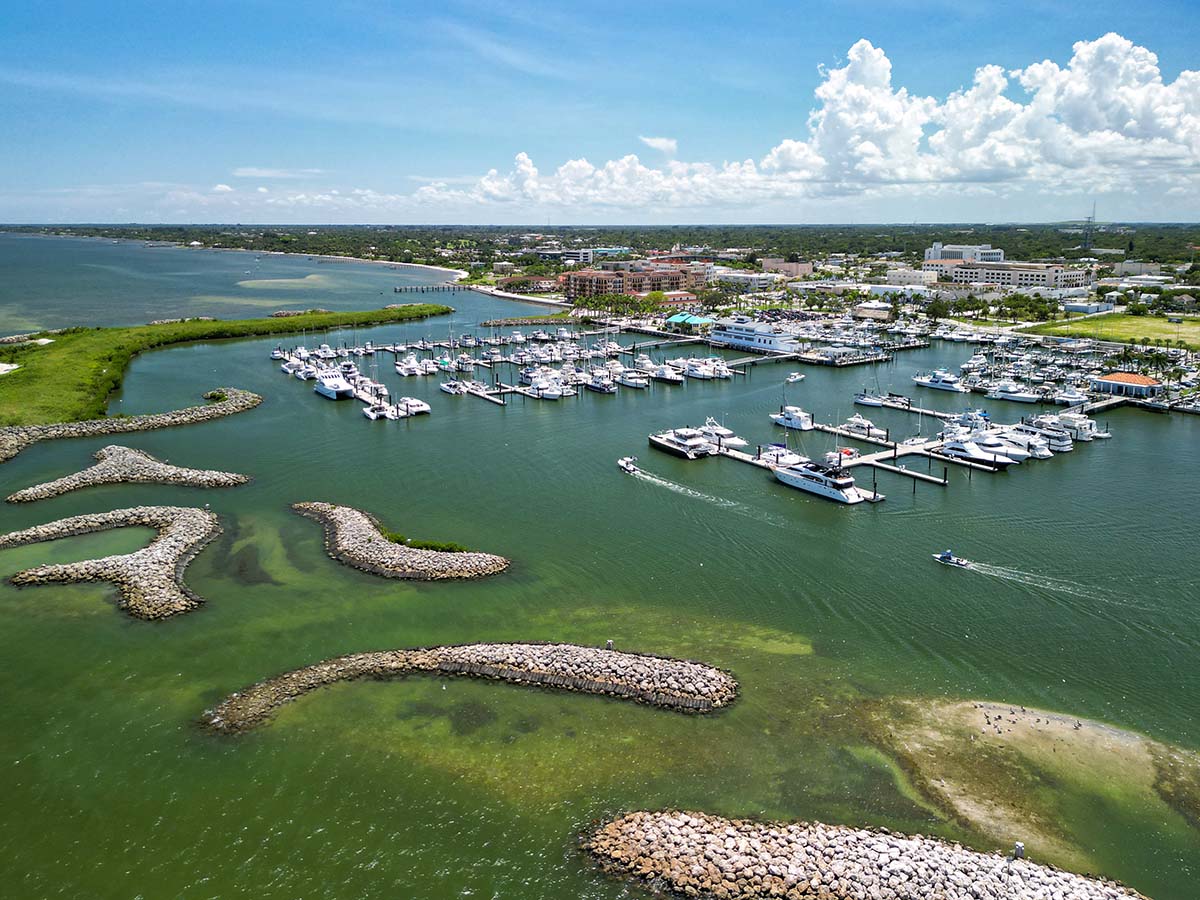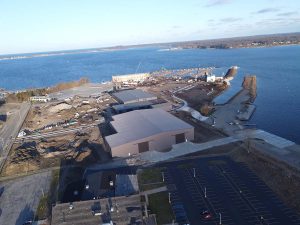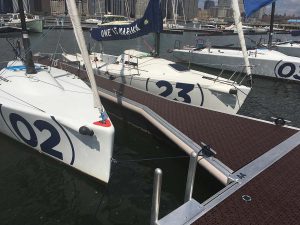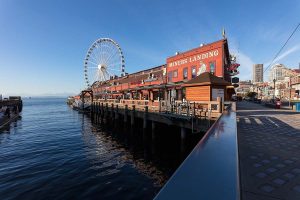
Designing Marinas with Habitat in Mind
Published on May 2, 2024As it is becoming more difficult to complete the permitting and entitlement process for new marinas and marina renovation projects, many marina owners are considering new and innovative strategies to demonstrate their commitment to environmental stewardship to regulators, neighbors and customers. Going above and beyond to minimize and/or mitigate the impact projects have on wetlands, water quality, water circulation and habitat for birds, fish and amphibians is all but a requirement to obtain permits in many jurisdictions. Fortunately, these efforts also have many positive impacts on the character and function of marinas, improving the experience for customers and setting facilities apart from the competition to achieve a meaningful return on the investments in environmental improvements.
Understand Your Surroundings
The first step in the process of designing habitat improvement is to understand what plant and animal species are most important in each area, and what specific strategies would be most beneficial to those species. Those strategies can then be applied in specific ways to improve the marina’s functional performance. Habitat considerations vary widely across the United States, so the design decisions made in the Pacific Northwest might be completely opposite of what needs to be done in the Great Lakes.
The process starts by meeting with regulators to better understand what species are most important, and then identify subject matter experts within the agencies to help work through the process to balance all the tradeoffs that are inherent with marina design.
The Great Lakes Region
The Adelaide Pointe project, located on Muskegon Lake on the eastern shore of Lake Michigan, offers a compelling case study. This site is a former steel foundry, with a large upland area created by the historic placement of foundry spoils into Muskegon Lake over decades. The fill created uplands that will become home to a mixed-use community of shops, restaurants, multi-family residential and hospitality uses, alongside a new 200 slip marina. The marina basin itself was also the site of foundry fill placement, which required the removal of over 100,000 cubic yards of foundry fill from the lake to expose the original lakebed.
Prior to dredging operations, the design team engaged specialist aquatic biologists who performed a dive survey that documented that the fill areas had very little habitat value and almost no submerged aquatic vegetation (SAV) or fish populations present, except for a narrow channel that had been dredged for a boat launch. That dredged area exposed the native lakebed, and there was a much greater diversity of SAV and fish present. A key species of concern in this area is the Lake Sturgeon, and the shallower waters created by placement of foundry fill in the lake limited the habitat value of this area for these fish.

As the marina’s location required extensive wave attenuation, all options were explored, including floating wave attenuators, rubble mound structures, sheet pile crib structures and a fixed wave fence. Due to longer wave periods and ice concerns, floating wave attenuators were eliminated from consideration. Working with the regulators at Michigan’s Department of Environment, Great Lakes & Energy (EGLE) and the Michigan Department of Natural Resources (MDNR) Fisheries experts, the sheet pile crib structure was also eliminated as it completely blocked water circulation and fish movement while also reflecting wave energy and impacting safe navigation. This left a rubble mound structure or a wave fence as possible options.
Where the goal is to create habitat for Centrarchidae species such as bass and sunfish, rubble mound structures are often created with strategically designed spawning beds of specific cobble sizes, which can also support spawning activities and create “nurseries” that protect eggs, larvae and juvenile fish from predators. Rather than using traditional mined limestone, this proposal included a cover layer of native fieldstone over the limestone core to create a more appropriate substrate for native SAV and invertebrate species. This approach also provides excellent wave attenuation and reduces wave reflection, while also being more affordable than other solutions. The challenge with this approach is that it represents a large amount of “fill” in the water, occupies a large area of public trust bottomlands, and while not completely solid, it does significantly reduce water circulation and limits the movement of fish.
After working with EGLE and MDNR, the preferred approach was a fixed wave fence composed of a steel sheet pile barrier mounted to a steel pile-supported public walkway that also served as a public fishing pier. The top elevation of the sheet pile was set in consideration of high-water levels and storm conditions, while the bottom of the sheet pile was suspended above the lakebed several feet to maintain water circulation and allow the free movement of fish in and out of the basin. To provide additional habitat, log structures were placed on lakebed outside of the marina basin to create cover for fish, while SAV was planted within the areas of the marina basin where boat navigation would not be impacted.

A major benefit of this wave attenuation system is that the interior of the marina basin could now be finished without any interior armoring at all, resulting in an extensive soft shoreline that is being fully restored with native wetland plant species. The dredging of the marina basin at the edges was completed at a relatively shallow slope of 3:1, which will remain stable while also attenuating the lower boat wakes within the marina basin to create a very calm basin. The native wetland shorelines will serve to filter all stormwater runoff from the uplands, resulting in exceptionally clean water within the marina basin while also creating a soft, beautiful edge that clearly demonstrates the developer’s commitment to building the most sustainable and environmentally conscious marina on the Great Lakes that will open to the public later this spring. At the end of the day, the incorporation of these approaches also led to grant funding of more than $1 million to help construct the facility.
Southern Region
In other parts of the country, such as the Gulf of Mexico and Florida, designers often encounter seagrass, mangroves, manatees and endangered sea turtles. Designing new or renovated marinas in these areas can be a real challenge requiring strategies that can protect these species while also surviving hurricanes. In these areas, utilizing offshore segmented breakwaters composed of a hybrid of stone and dredge materials can create habitat for many species of fish, plants and birds, while protecting the marina and directing sediment away from the marina to minimize maintenance dredging and the associated environmental impacts. In the case of the breakwaters at Fort Pierce, Florida, FEMA pre-disaster mitigation funding covered approximately $18 million of the $20 million cost.
Northern Regions
New York Harbor and the Pacific Northwest have strict regulations aimed at reducing overwater shading. For some species, shading is a desirable habitat, while for others shading creates habitat for the predator species that feed on the species the fisheries experts are trying to preserve. In those cases, it is important to minimize the area of coverage of docks by making everything as narrow as possible, while still maintaining safety and longevity of the docks. Some jurisdictions now require the use of decking materials that allow a set amount of light to pass through, a feature known as “light transmissivity.” This is generally accomplished by using composite or plastic decking panels with integrated open grid structures to allow a minimum amount of light to pass through to reduce shading effects below.
In Seattle, an innovative seawall along Elliott Bay incorporates translucent pavers that allow light to pass through to an extensive network of shelve

s and habitat features below that support salmon and the species they feed on. Like all innovative projects, it is important to monitor them over time to see if they perform as expected and are worth the investment. The University of Washington is conducting a 10-year monitoring program to see what works and identify where improvements can be made when building marinas.
As more boaters care more about the environment, setting a marina apart by creating softer shorelines, cleaner waters and more habitats can be a winning strategy for getting projects permitted and funded while also attracting more customers.
| Categories | |
| Tags |






